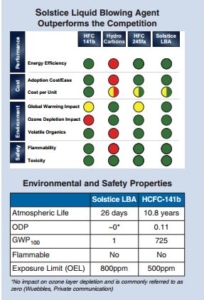Newton, Mass. – The Green Cocoon, Inc. (TGC) was recently awarded an insulation project for a home in Newton, Mass. The original home, built in the early 1900s, is being fully renovated, gutted completely to the studs. Once completed, solar panels will be installed in the home and it will run on 100 percent electricity. Consequently, this house will not use any fossil fuels!
Closed cell spray foam was used on this project, specifically Gaco HFO (hydrofluoroolefin) spray foam. HFO closed cell spray foam is a reformulated version of spray polyurethane foam. But, the reformulated version has only a tiny fraction of the global warming potential of its predecessor. HFO is a blowing agent and is an essential ingredient in spray foam insulation. It creates the tiny bubbles of trapped gas that slow the movement of heat and make foam such a good insulator with a very high R-value. But the most common blowing agent in spray polyurethane foam today, a hydrofluorocarbon, has a global warming potential (GWP) more than 1,000 times that of carbon dioxide. The newer type of blowing agent has a GWP of 1.[i]
“We have been using an eco-friendly closed cell spray foam for quite some time,” said Candace Lord, Green Cocoon Vice President. “It reduces excess waste and energy consumption in buildings by up to 50 percent while adding rigidity and strength to the structure. The R-value is over 7 per inch, and it has a greater resistance to the leakage of air and water vapor. It is a perfect vapor barrier in both summer and winter.”
The contract was awarded by Essex Restoration, a residential building and remodeling company in Wilmington, Mass. They have been working with TGC for over two years on restoration and renovation projects.
[i] Green Building Advisor (2017, February 9). Next Generation Spray Foams Trickle into the Market. Retrieved from greenbuildingadvisor.com













